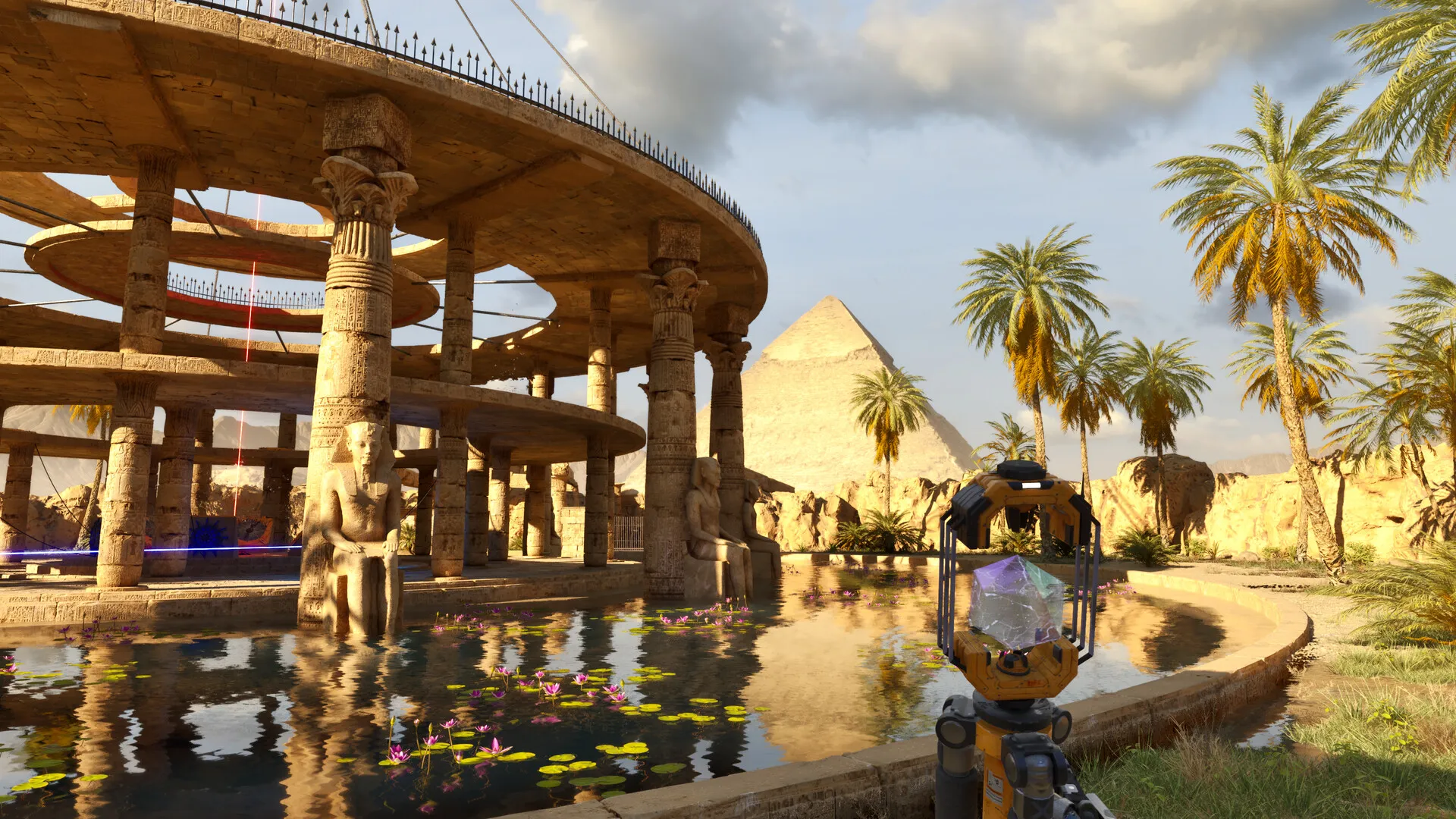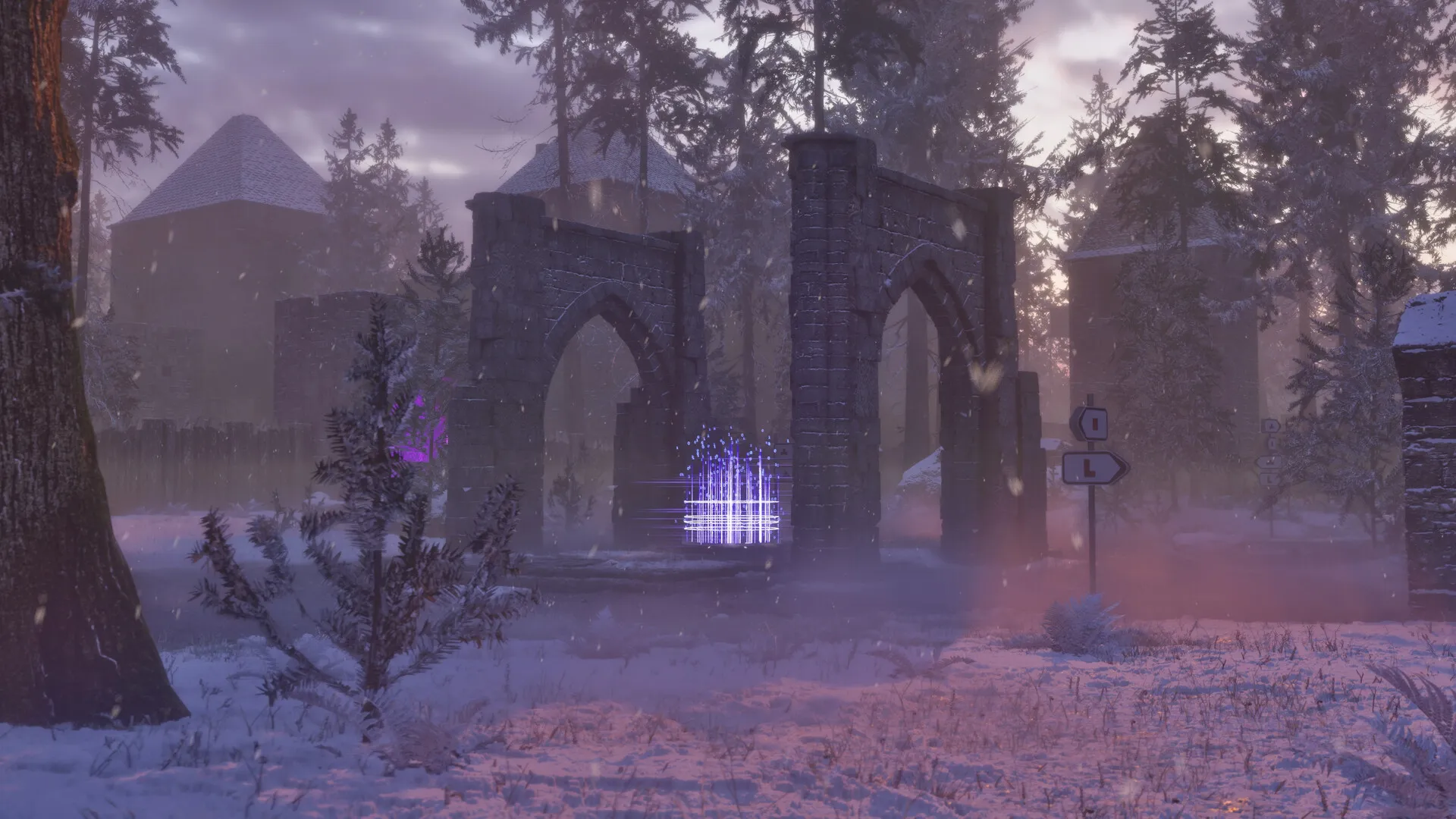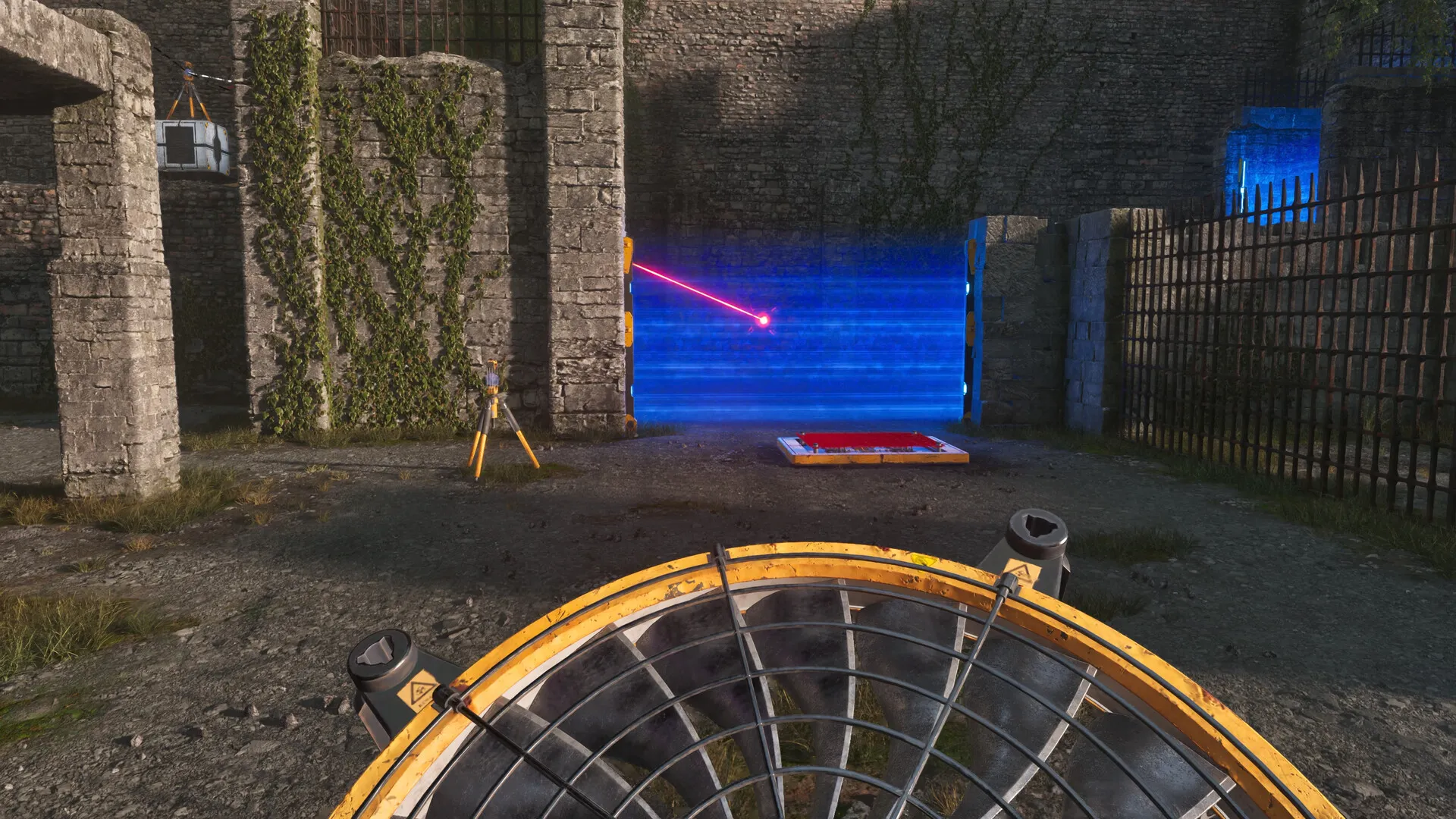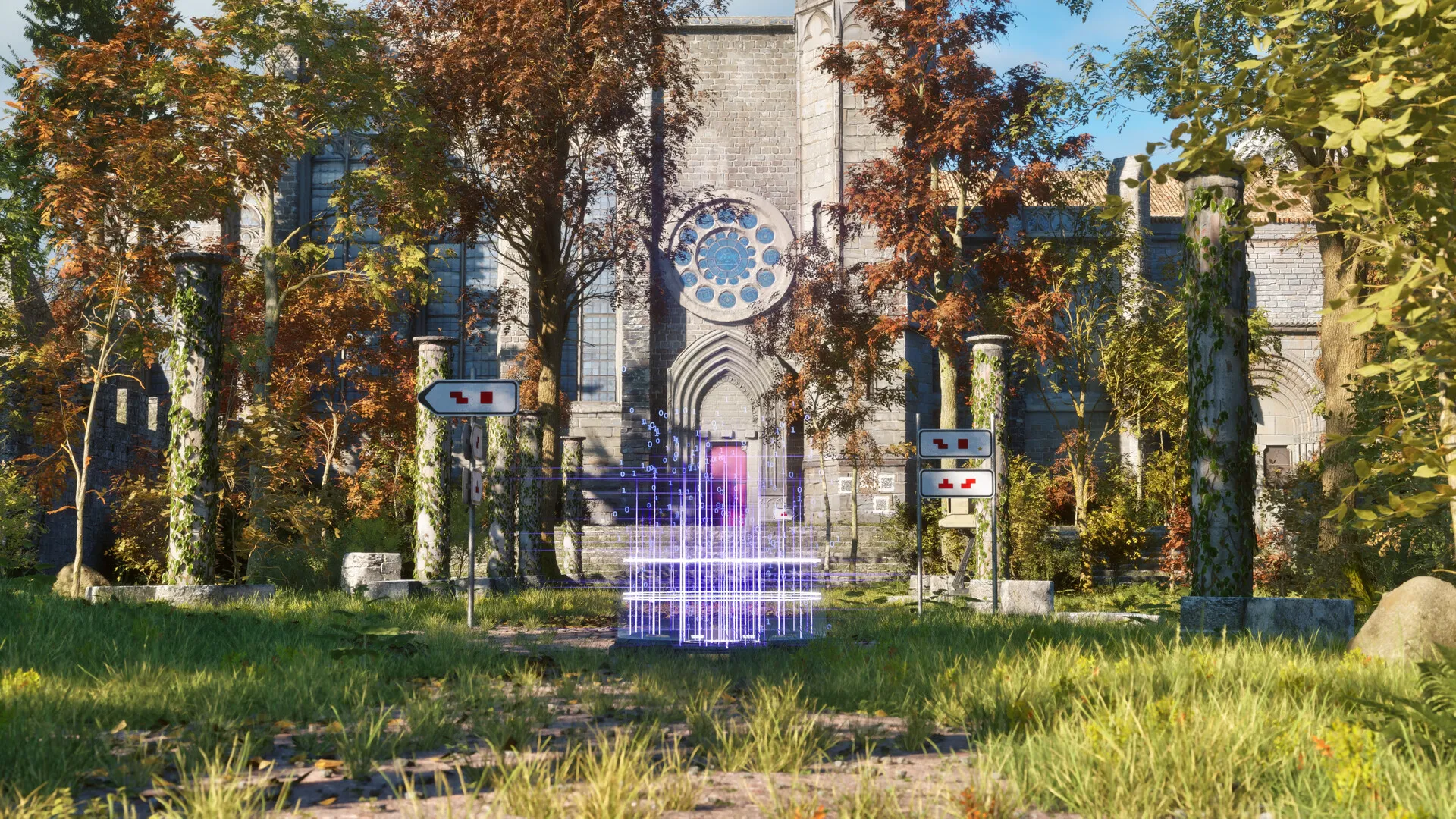You awaken as an android in a world that stuns with its juxtaposition of ancient ruins and futuristic elements. The environment is a blend of classical architecture and advanced technology that creates an atmosphere filled with mystery and philosophical weight. The setting is crafted with care, revealing remnants of a bygone era alongside hints of modern innovation, inviting players to explore spaces where history meets speculation.
The narrative weaves questions about consciousness, existence, and the nature of self into each interaction. As players solve puzzles and piece together clues, the atmospheric audio and ambient storytelling intensify the mood, challenging one to reflect on deeper aspects of being. The game presents its philosophical musings through subtle cues, from cryptic terminals to conversational voiceovers that probe ideas of purpose without overwhelming the player.
This edition benefits from updated graphics and fresh content, ensuring that both longtime fans and first-timers experience a refined version of the original challenges. The refined visuals provide clarity to intricate puzzles, while the additional chapters expand on the universe’s lore. The result is a presentation where gameplay mechanics and narrative blend in a manner that feels both thoughtful and accessible for anyone intrigued by puzzles that engage the mind and heart.
Striking Visual and Auditory Craftsmanship
The remaster takes full advantage of Unreal Engine 5, which refines the game’s settings into visually impressive displays. Upgraded lighting techniques cast realistic shadows and soften contrasts, while textures appear sharply detailed. The result is an environment where ancient stone and futuristic technology coexist in rich detail, reminiscent of standout visuals seen in acclaimed indie RPGs and narrative-driven puzzles. Small elements like weather transitions and moving light sources enhance the realism, allowing the player to feel immersed in a living world that communicates mood and history with every scene.
Sound plays a significant role in the experience. The score is gentle and unobtrusive, offering quiet moments of reflection as players traverse the environments. Ambient audio cues, such as the hum of distant machinery or the soft rustle of wind through aged ruins, accentuate the immersive quality of the setting.
Voice performances—particularly the guidance from the disembodied presence—deliver narration that feels sincere and articulate without overwhelming the central gameplay. Commentary snippets throughout the game offer thoughtful insights, giving a behind-the-scenes perspective that enriches the overall narrative tapestry.
On the technical side, the updated engine does demand considerable hardware, but the performance remains steady on modern systems. Controls have been refined, catering to both PC and console audiences, with careful customization settings that support a smooth interaction without sacrificing the game’s signature challenge.
While some puzzle titles in the indie space are known for minimalism in presentation, this game pairs its visual enhancements with a practical, user-friendly interface that minimizes frustration. Each technical refinement serves to support the weighty narrative themes and intricate puzzle challenges, creating an experience where every element works in clear support of the overall atmosphere.
Puzzle Design and Gameplay Mechanics: A Critical Analysis
The game presents puzzle challenges using a collection of tools that feel carefully integrated with its unfolding narrative. Players are introduced early on to basic devices such as signal jammers, devices that alter light paths, and movable blocks that must be reconfigured to activate or deactivate obstacles.
These simple interactions ease players into the fundamental logic required for later stages, granting a sense of control and clarity as the puzzles begin to form. The early levels offer ample opportunities to understand each mechanic separately, making later combinations feel like a natural progression.
As players progress, the puzzles require a greater degree of coordination, with challenges emerging that demand logical sequencing, precise timing, and a keen sense of spatial relationships. A standout feature here is the time rewind capability, paired with checkpoints that store progress moments.
Such design choices reduce potential frustration without undermining the intended challenge, making mistakes feel instructive rather than punishing. This careful adjustment encourages experimentation while keeping the play experience thoughtful and deliberate.
New content injected through expansions introduces fresh puzzle formats that merge established elements with novel obstacles. Specific areas require players to combine several mechanics simultaneously; for instance, redirecting beams of energy while repositioning blocks and managing timing sequences.
These puzzles create scenarios where multiple actions interlock, and failing one sequence produces a noticeable impact on succeeding steps. The integration of these systems gives each puzzle a multidimensional quality, inviting players to piece together solutions in a way that reflects the choices made during earlier encounters.
Design decisions here grant players substantial freedom in selecting the order of challenges. The open structure permits tackling puzzles in a variety of sequences, a design choice that rewards experimentation. Players have ample opportunity to decide on their approach, and different playstyles can uncover alternative solution paths.
This flexibility ensures that personal decisions come with genuine consequences, contributing significantly to the game’s feel. The learning curve remains gentle through the steady rise in difficulty, ensuring that every challenge has its own balance of contemplation and reward, regardless of the player’s level of experience.
Philosophical Depth and Interactive Storytelling
The game centers on an unnamed android guided by a mysterious voice named Elohim within a vast digital environment. From the onset, each puzzle becomes a part of a larger inquiry into self-awareness and the nature of existence. The challenges the player faces serve a dual purpose—they test problem-solving skills while gradually unveiling philosophical questions about identity, free will, and the act of creation.
Through carefully placed in-game computers, digital logs, and subtle environmental cues, the plot unfolds slowly. Atmospheric voiceovers and written records lead the player to uncover layers of lore, revealing a world filled with historical ruins fused with futuristic design. This method of storytelling encourages players to piece together the narrative much like they solve a puzzle: every interaction contributes to a growing sense of mystery and self-reflection.
The themes of consciousness and individual purpose are expressed through a contrast between antiquated structures and modern technology. This opposition highlights how remnants of past beliefs interact with futuristic ideals, prompting players to consider their own existence and decision-making. The narrative draws hints from classic science fiction and philosophical texts, using moments of reflective dialogue to inspire deeper thought regarding the nature of free will.
Solving a puzzle does not merely grant progression; it unlocks fragments of history and thought that challenge the player to weigh their choices. These narrative discoveries affect the emotional tone of the game, encouraging both careful contemplation and active experimentation.
Players are often met with choices that have tangible consequences in how the story unfolds, ensuring that every action has a visible impact on the evolving narrative framework. This integration of interactive elements with narrative exploration creates an experience that feels thoughtfully layered and rich in reflective potential.
Crafting a Living World
The game features an open framework that allows players to approach puzzles in the order they prefer, granting freedom to explore various sections without feeling tethered to a single path. Each area transitions smoothly into the next, with one completed challenge unlocking access to the subsequent region. This non-linear design ensures that the player’s experience remains fluid and encourages a sense of discovery throughout the digital environment.
A striking element of the world is the mixture of classic ruins with elements of current technological innovation. For instance, ancient stone formations and eroded carvings coexist with sleek, digital interfaces and illuminated data panels. Small cues, such as faded murals beside modern screens, invite players to infer aspects of the backstory with careful observation, enriching the immersive atmosphere.
Hidden throughout the levels are secret areas and optional challenges that reward attentive exploration. The integration of bonus puzzles and interactive markings, like QR-like codes or subtle graffiti, adds layers of content that detail the lore and history of the game’s setting. These minor features infuse the surroundings with a rich sense of place and context, inviting players to examine even the smallest background elements for clues about the larger world.
Overall, the design of these levels supports both structured exploration and spontaneous discovery. The environment itself tells a story that complements the gameplay, drawing players deeper into a world where every corner holds an opportunity for learning or unexpected insight.
Crafting Enduring Engagement
The game introduces extra campaign chapters that enhance both the narrative and puzzle challenges. The Road to Gehenna expansion and the all-new In the Beginning DLC add fresh puzzle scenarios and narrative fragments that expand on the central themes. Players encounter distinct sets of challenges that are woven into the fabric of the game’s lore. These chapters provide additional context and invite deeper reflection on the digital world’s internal logic and history.
An in-game puzzle editor encourages players to generate their own challenges and share them with others. This tool supports creative input, turning the experience into a living lab for inventive puzzle design. Custom-made puzzles contribute to a cycle of recurring play sessions, offering continuous variation and fresh trials that keep the community active and engaged. This type of user-generated content has kept many similar indie puzzle titles relevant for extended periods.
The game offers customizable control schemes that cater to various play styles, whether using a keyboard and mouse or a game controller. Settings like view adjustment, third-person camera options, motion effects, and color accessibility modes allow for a tailored experience that suits diverse user needs. A rewind mechanism and improved checkpoint system reduce the impact of small errors, making the gameplay flow smoother and less intimidating for less experienced players.
This collection of extra features creates an experience that continues to evolve as players contribute their own puzzles and adjustments. Community-created content ensures that challenges remain fresh, while the broad range of customization settings gives players control over their interface and comfort level. Combining new campaign content, creative tools, and accessible settings results in a design that encourages ongoing participation and offers a sustained, thought-provoking puzzle experience.
The Review
The Talos Principle: Reawakened
Revitalizing a cherished classic, this game masterfully blends intricate puzzle challenges with a deep philosophical narrative. Technical upgrades and striking visuals amplify its thematic depth, while the integration of meaningful player choices results in consequences that persist throughout the experience. Extensive community features add fresh layers of replayability, keeping challenges inventive and dynamic. Its balanced design appeals to both casual players and those seeking rich, contemplative gameplay.
PROS
- Engaging philosophical narrative that complements intricate puzzle mechanics.
- Visually impressive upgrades powered by Unreal Engine 5.
- Open-ended level design that rewards exploration and creativity.
- Robust community features and puzzle editor for endless replayability.
- Accessible gameplay appealing to both casual and dedicated players.
CONS
- Demands higher-end hardware for optimal performance.
- Some puzzles may challenge players who favor a more guided experience.
- Control schemes could be more refined across diverse platforms.
- Occasional technical glitches in newly added content.




















































